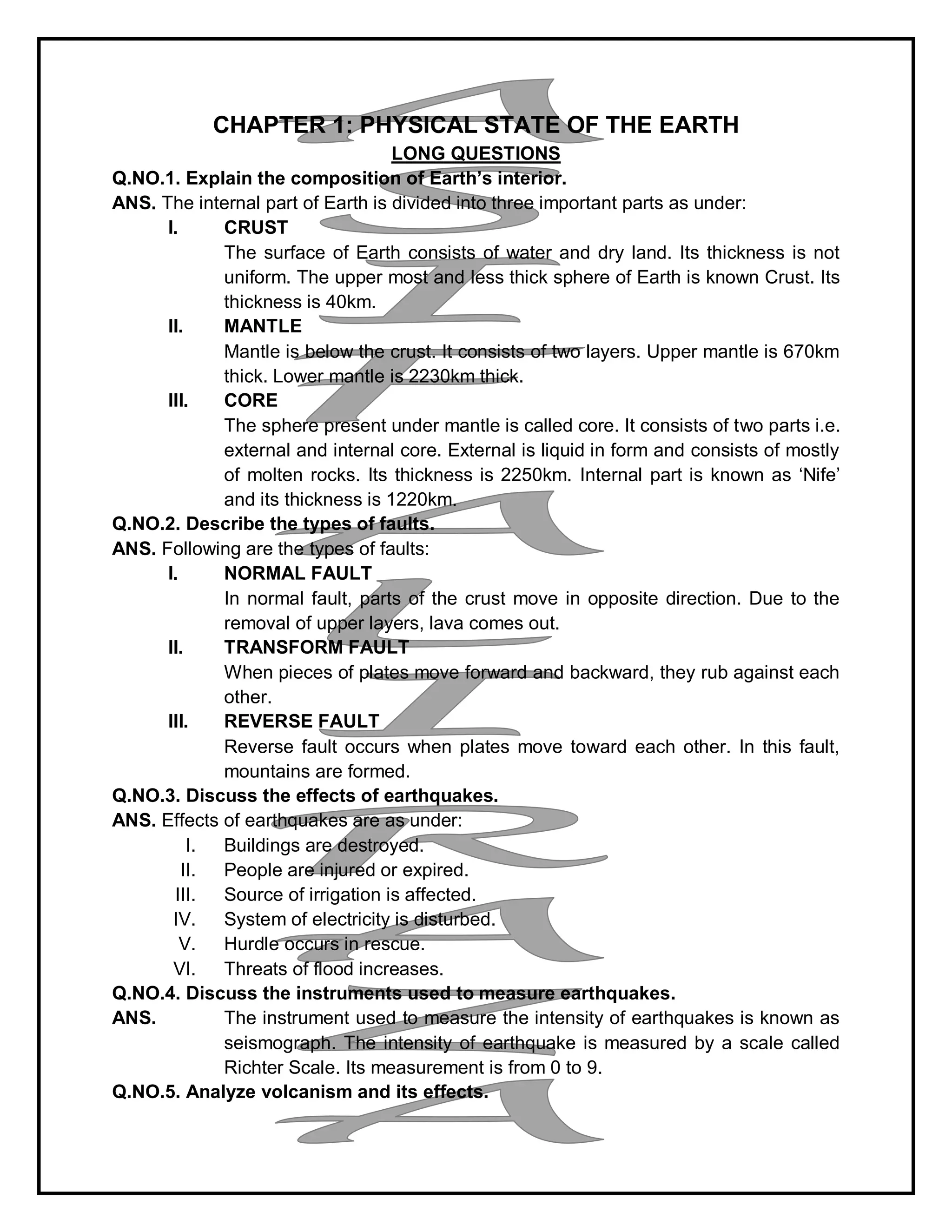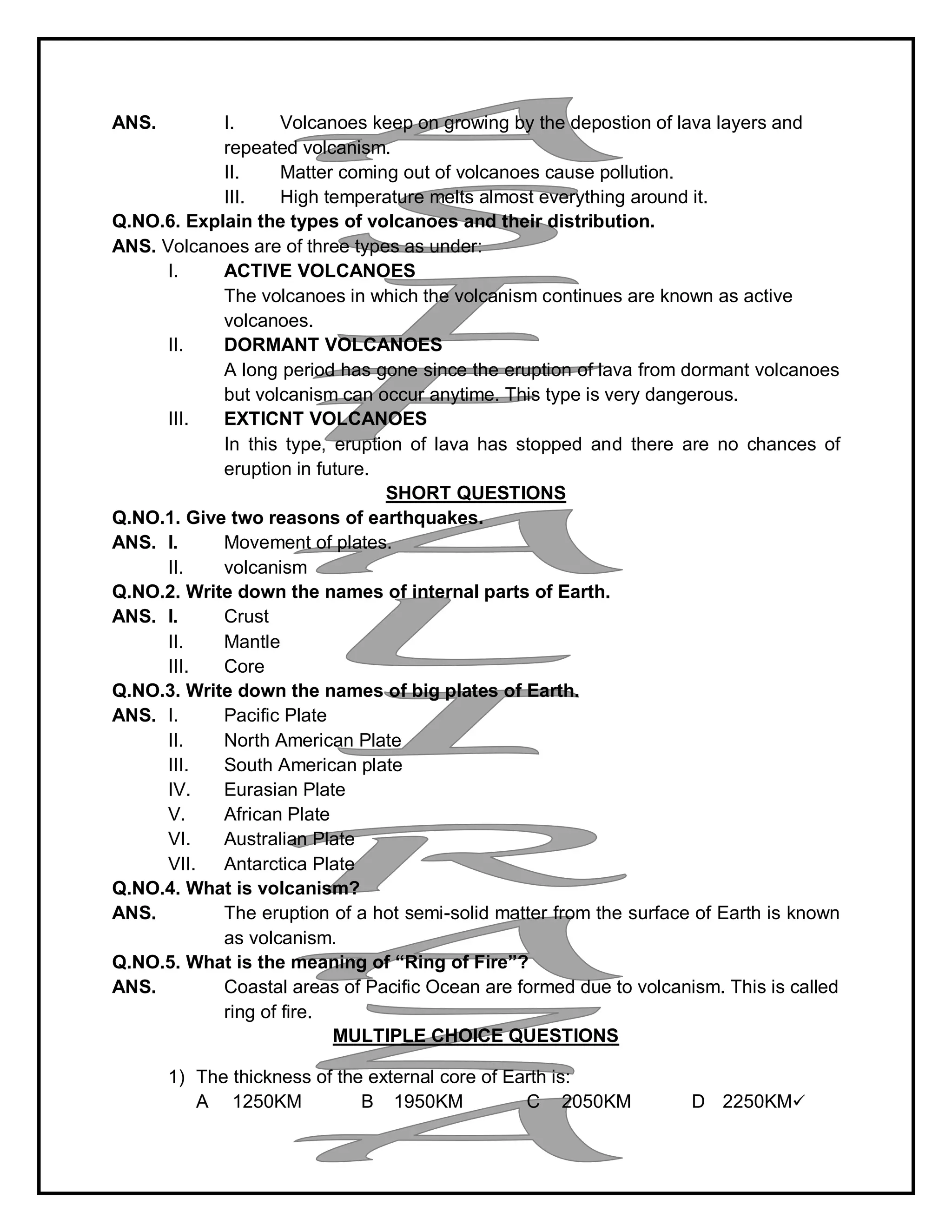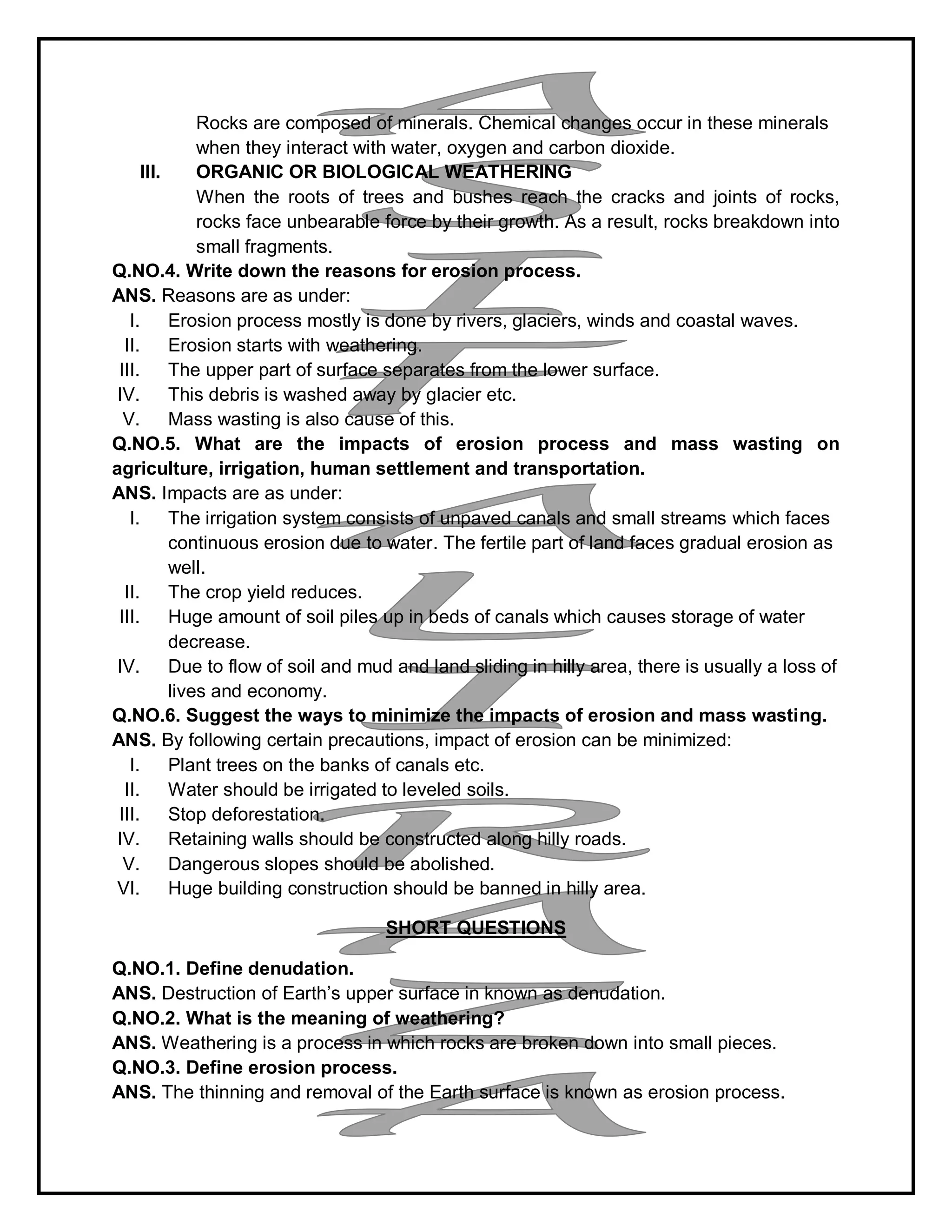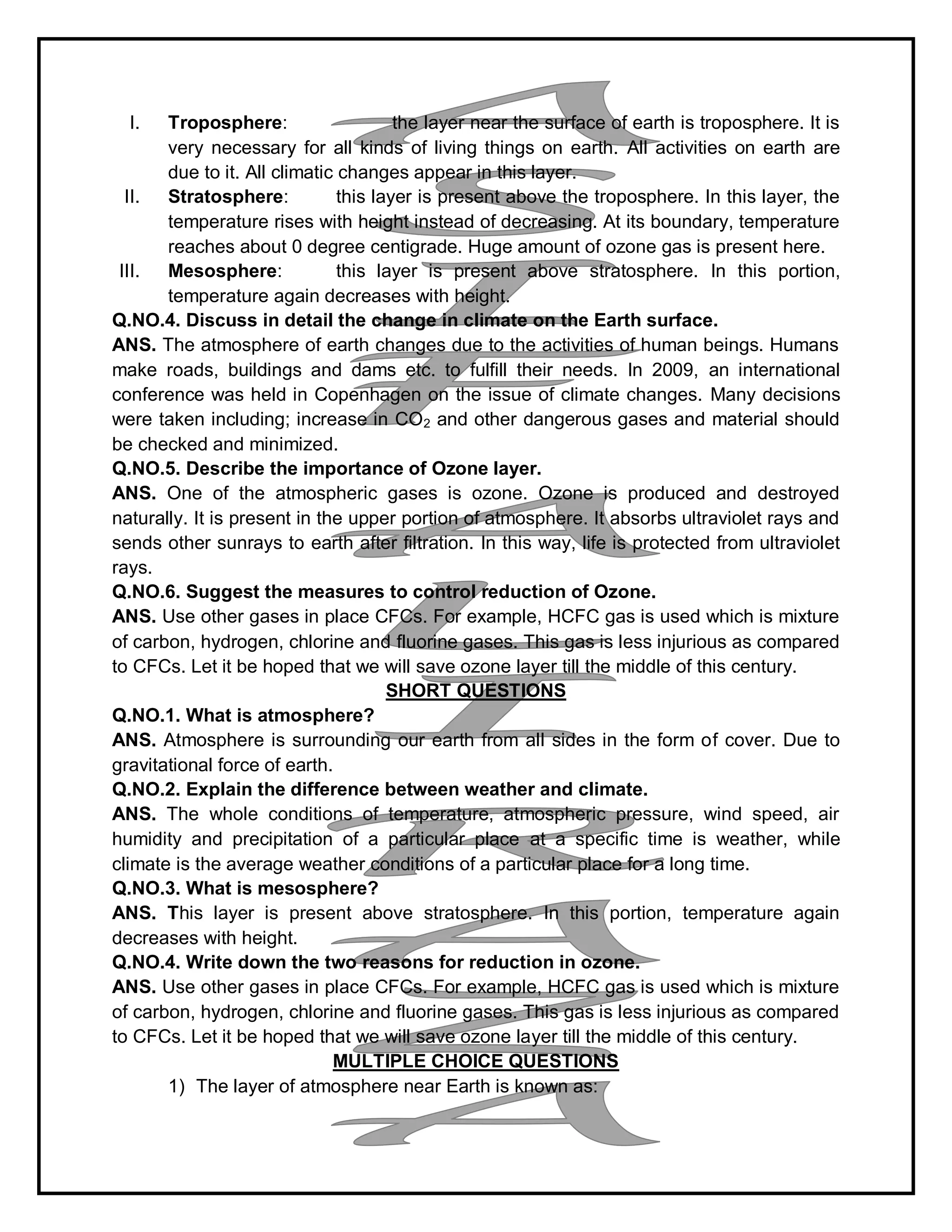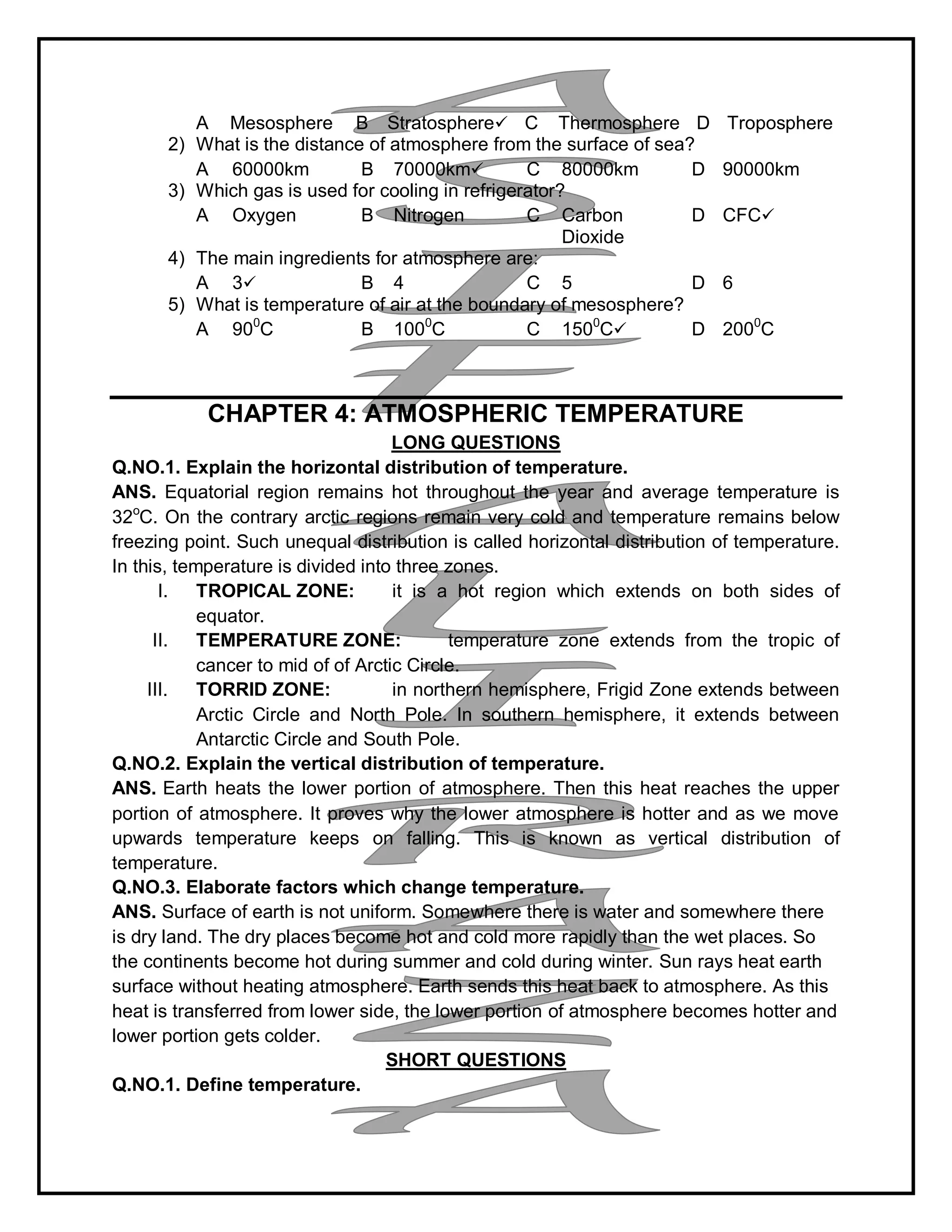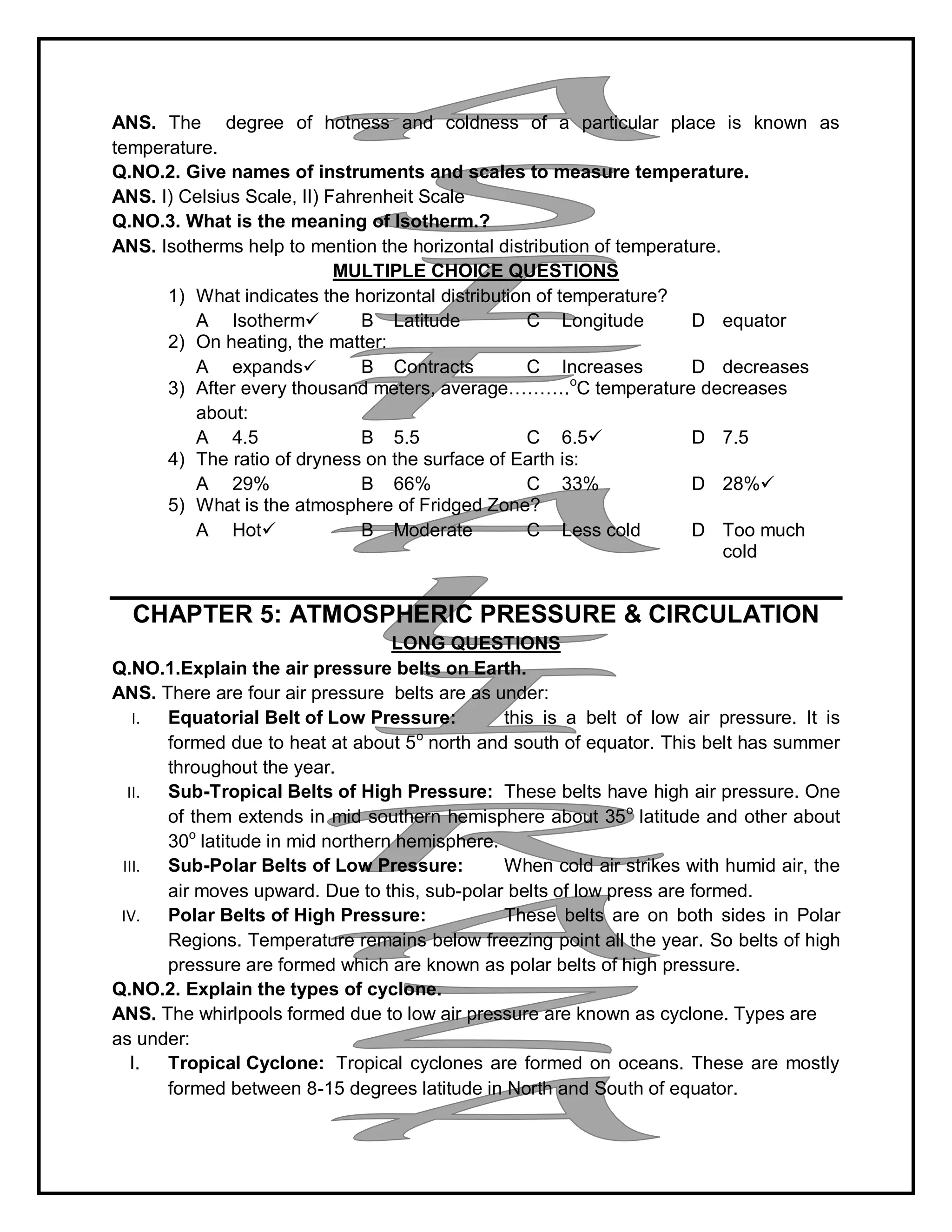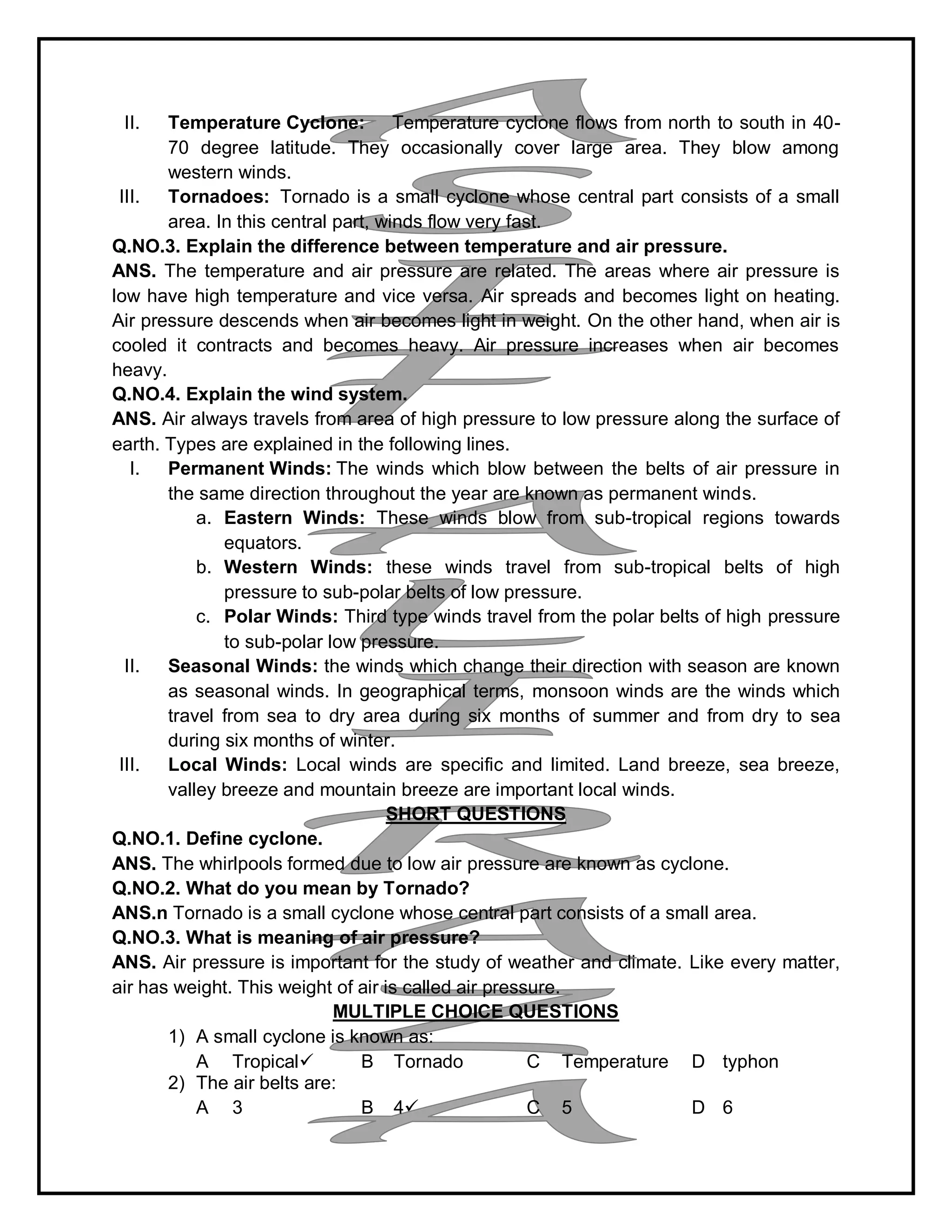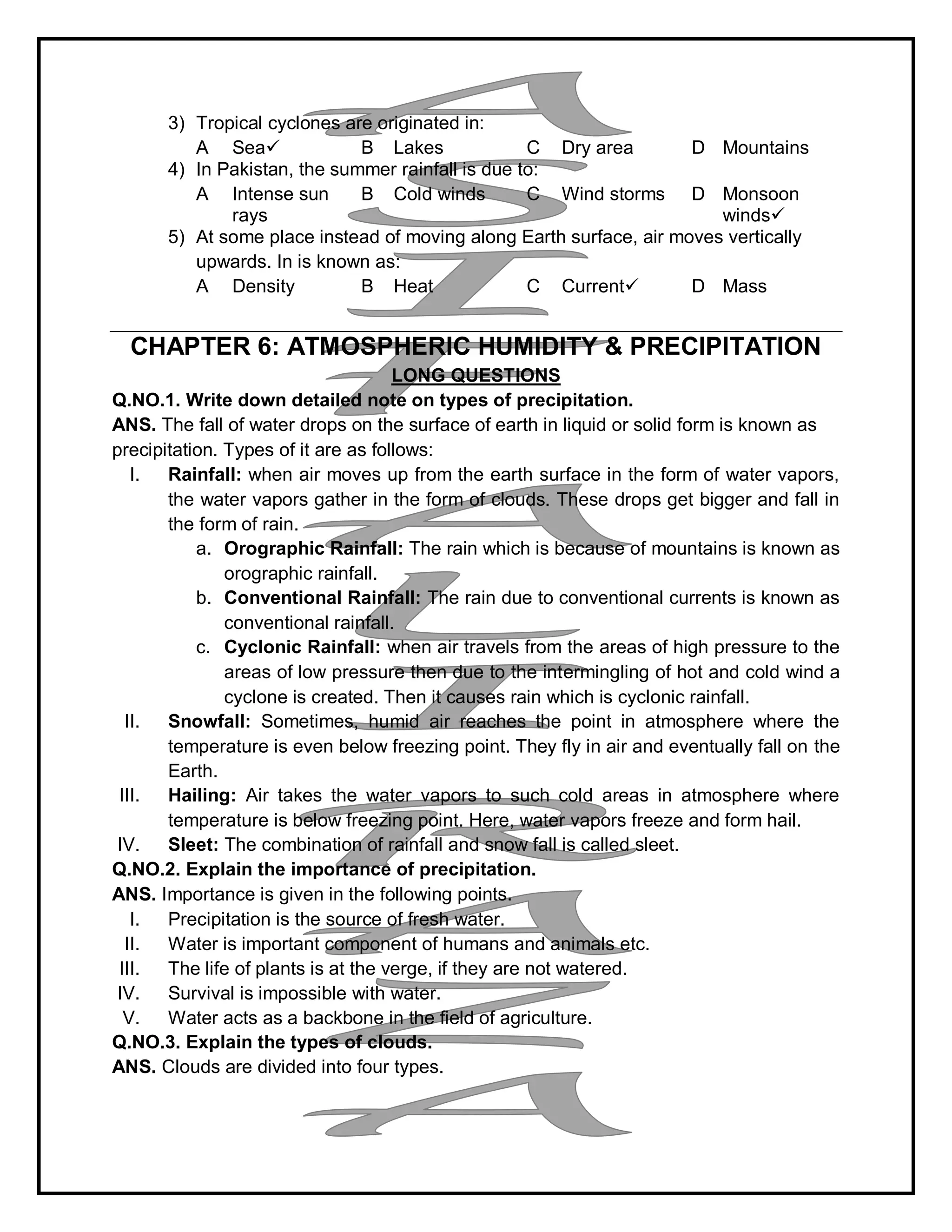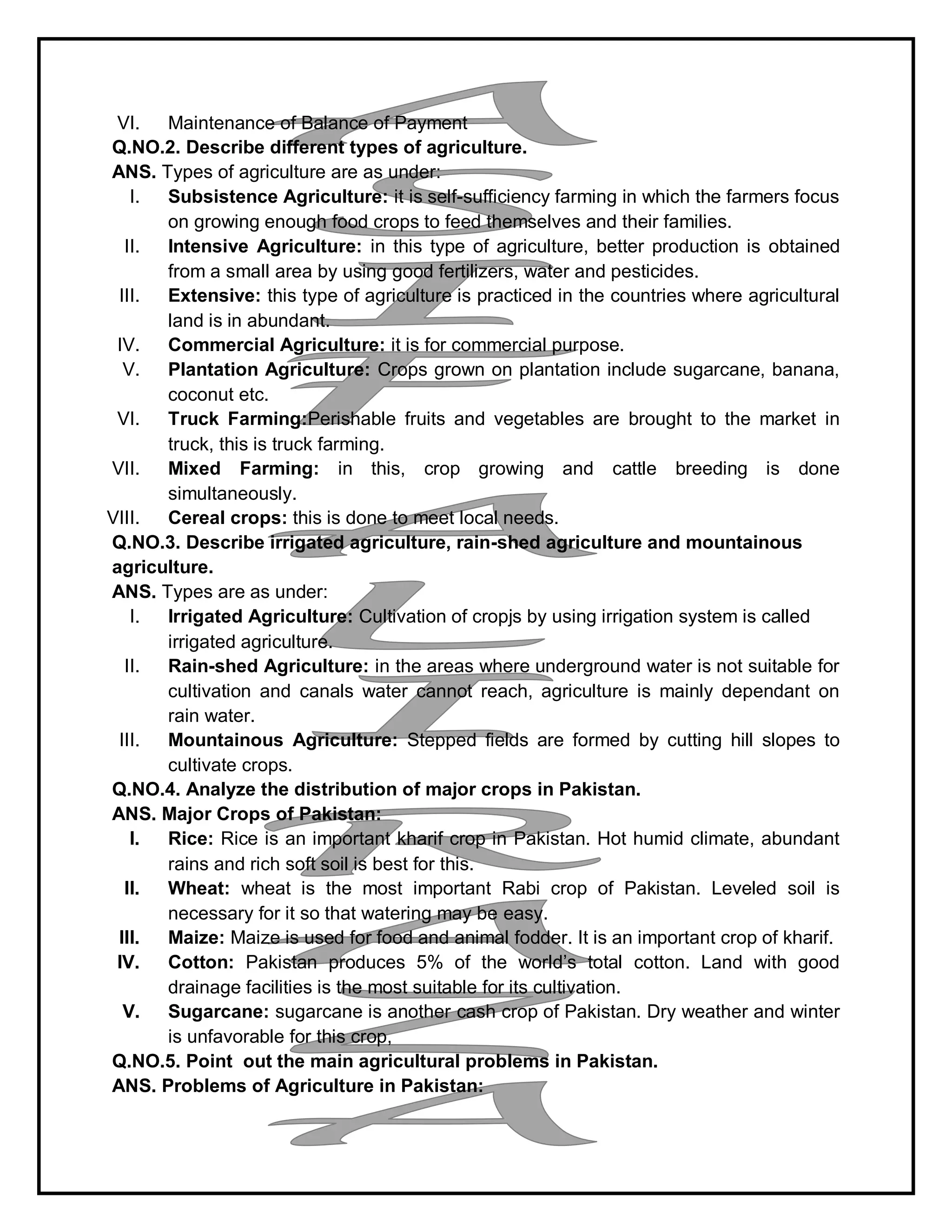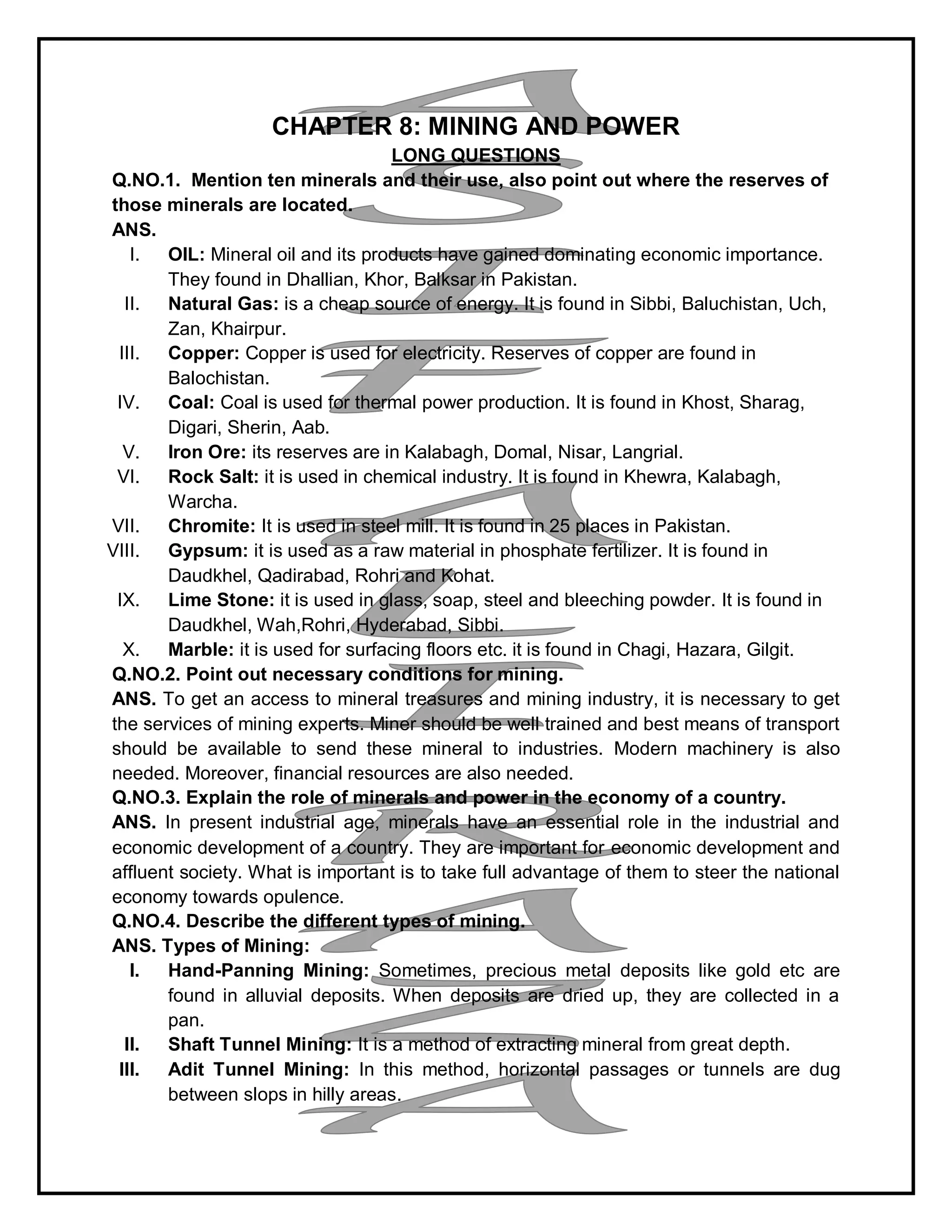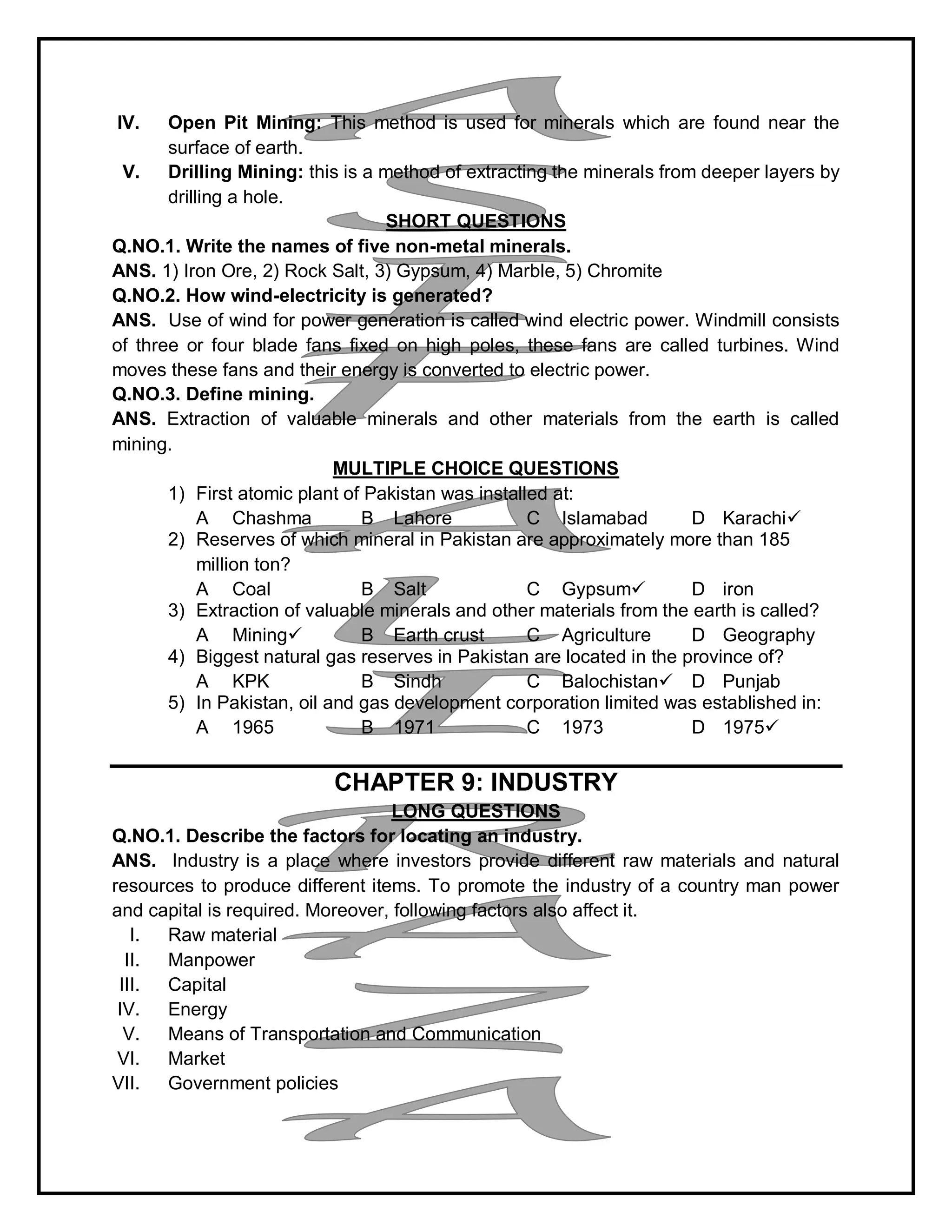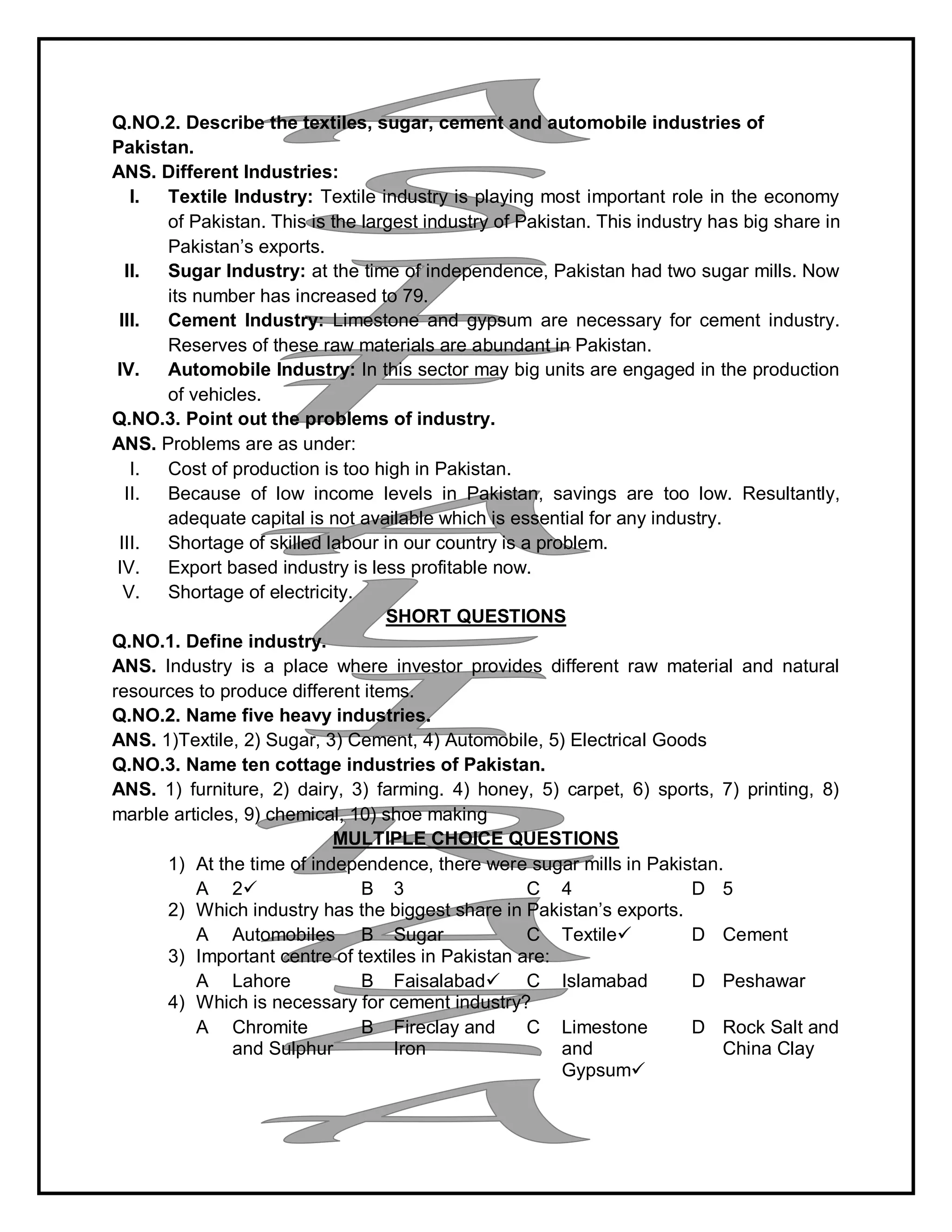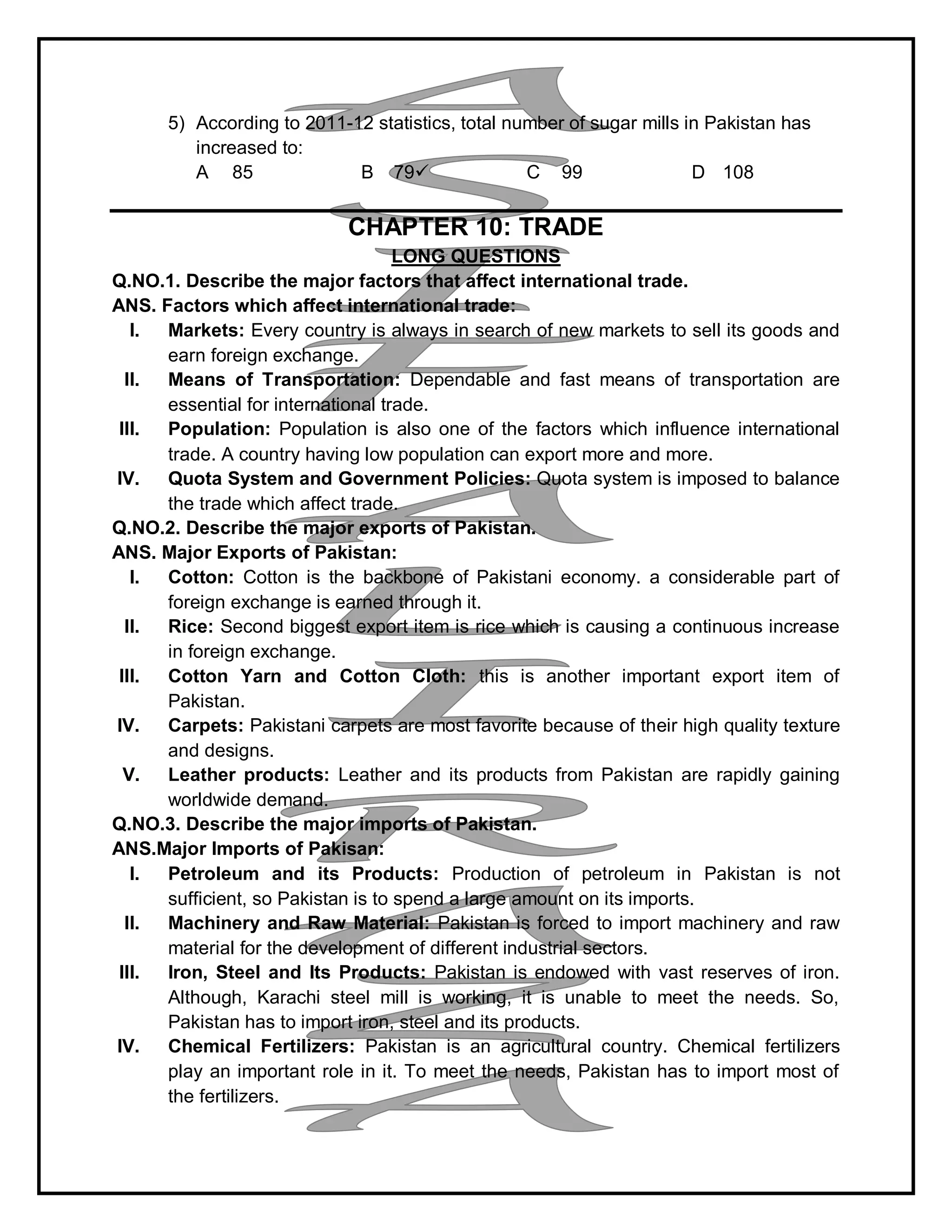This document contains solutions to textbook exercises for grade 7 geography. It discusses the composition of Earth's interior in 3 parts: crust, mantle, and core. It describes 3 types of faults: normal, transform, and reverse. It discusses the effects of earthquakes and instruments used to measure them. It analyzes volcanism and its effects. It explains the 3 types of volcanoes and their distribution. It also contains short answers and multiple choice questions related to these topics.
![2016
FG PUBLIC SCHOOL NO. 2 (BOYS),
TARIQ ROAD, SIALKOT CANTT
Asif Ali Raza, TGT
[GEOGRAPHY]
This document contains brief and concise solution of the exercises of the text books of grade VII](https://image.slidesharecdn.com/notesofs-170106181559/75/Notes-of-s-st-class-vii-1-2048.jpg)
